木星 ALPO-Japan Latest

Jupiter Image 2009/07/23(UT)
永長英夫,安達 誠
John Kazanas,Sadegh ghomizadeh,Hubble Space Telescope,Anthony Wesley,George Tarsoudis,Efrain Morales Rivera,David Pretorius,Nilde Sotera
J.Kazanas,Sadegh.GH,HST,Anthony,H.Einaga,G.Tarsoudis,E.Morales,D.Pretorius,M.Adachi,N.Sotera
|
John Kazanas (317mm Newton) |
 [John Kazanas,Melbourne Australia]
[John Kazanas,Melbourne Australia]
|
Sadegh ghomizadeh (235mm SC) |
At 39 Degrees the Horizon! seeing& atmosphere was poor
information: telescope Celestron 11" Schmidt Cassegrain Focal lenght 2800 mm,focal ratio 10,
camera SKYnyx mono+2.5xBarlow total 1200 frames stacks
Filter: astronomik RGB,processing software: regitax & PS
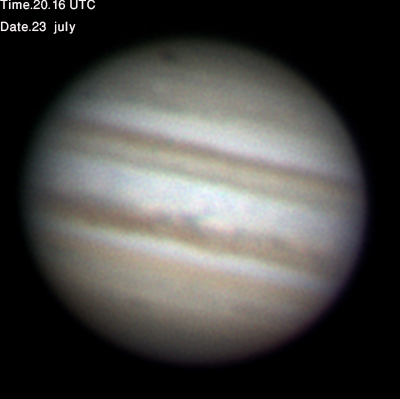

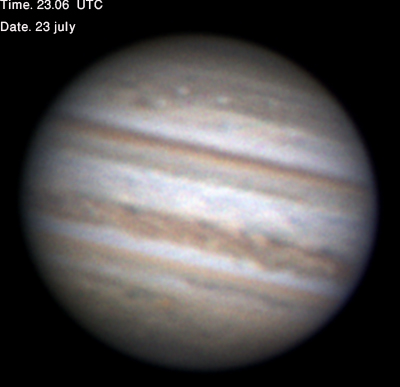 [Sadegh ghomizadeh: Tehran IRAN ]
[Sadegh ghomizadeh: Tehran IRAN ]
|
Hubble Space Telescope(2900mm fl=5300mm) |
ABOUT THIS IMAGE:
This Hubble picture,taken on July 23,is the sharpest visible-light picture taken of the impact feature. The observations were made with Hubble's new camera,the Wide Field Camera 3 (WFC3).
The combination of the Hubble data with mid-infrared images from ground-based telescopes will give astronomers an insight into changes of the vertical structure of Jupiter's atmosphere due to the impact. The expanding spot is twice the length of the United States.
First discovered by Australian amateur astronomer Anthony Wesley,the feature is the impact site and "backsplash" of material from a small object that plunged into Jupiter's atmosphere and disintegrated.
The only other time in history such a feature has been seen on Jupiter was in 1994 during the collision of fragments from comet Shoemaker-Levy 9. The spot looks strikingly similar to comet Shoemaker-Levy 9's impact features. The details seen in the Hubble view shows lumpiness in the debris plume caused by turbulence in Jupiter's atmosphere.
The impactor is estimated to be the size of several football fields. The force of the explosion on Jupiter was thousands of times more powerful than the suspected comet or asteroid that exploded in June 1908 over the Tunguska River Valley in Siberia.
This is a natural color image of Jupiter as seen in visible light.
July 23,2009 19:00 UT South up image

Original

Original
[NASA/JPL/Space Science Institute]
|
Anthony Wesley (332mm Newton) |
Here is an image taken in excellent seeing conditions,showing Io,it's shadow,Callisto (just off the side to the left) and the GRS coming into view. It looked stunning in the live feed,hope you like the result
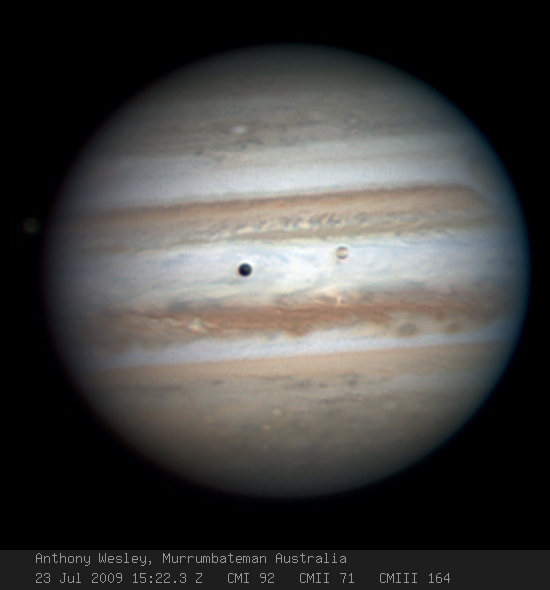
[Anthony Wesley,Murrumbateman Australia]
≪アンソニ オーストラリア≫
|
Hideo Einaga (300mm Newton) |
 [Hideo Einaga Kasai-City Hyogo-Prefecture Japan]
≪兵庫県 加西 永長英夫≫
[Hideo Einaga Kasai-City Hyogo-Prefecture Japan]
≪兵庫県 加西 永長英夫≫
|
George Tarsoudis ( 250mm Newtonian ) |
Because is my second time I have send gif movie and I do not see in ALPO Jupiter section my image. Please inform me if it is not possible to see my movie in ALPO.
I can send and image with part of movie images.


[George Tarsoudis,Alexandroupolis of Greece]
《ターソウディス ギリシャ アレクサンドロポリス》
|
Efrain Morales Rivera(300mm SC)
|
2009/07/23 08:37ut
LX200ACF 12 in. F25
DMK21AF04
PowerMate 2.5x
Astronomik LRGB
Baarder IR/UV filter
Seeing 6/10 6/10
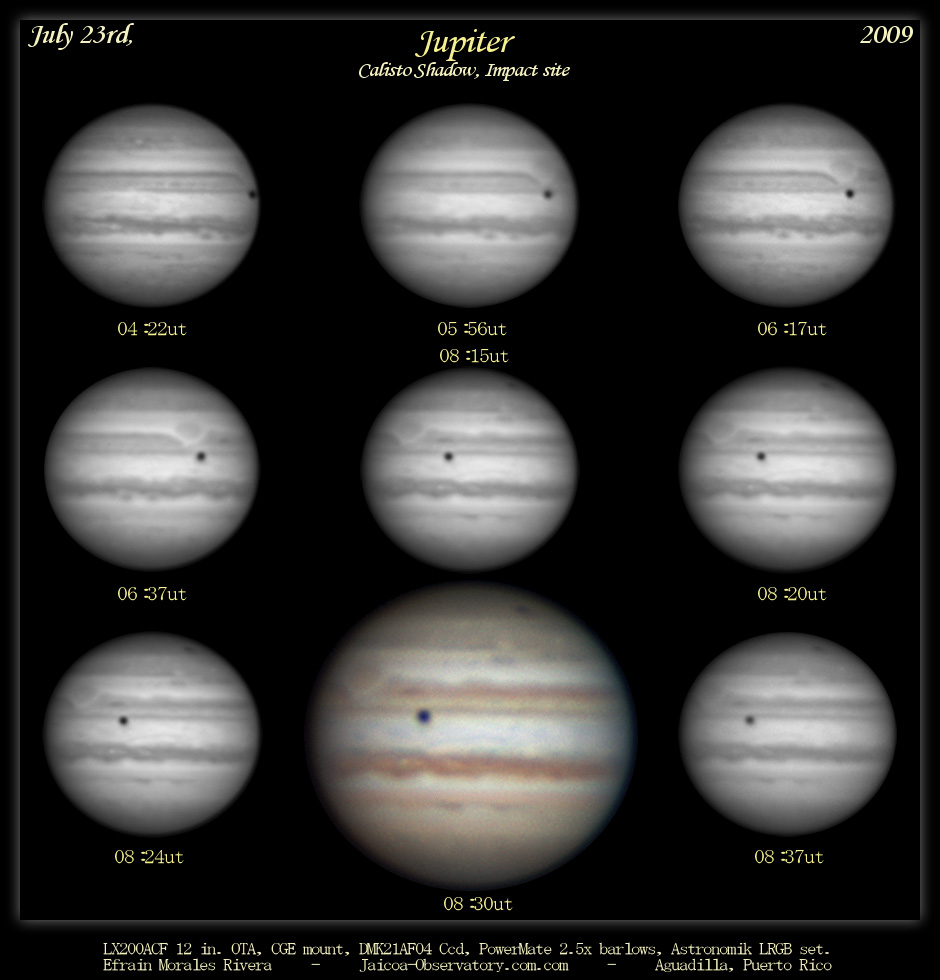 [Efrain Morales Rivera Aguadilla:Puerto Rico]
[Efrain Morales Rivera Aguadilla:Puerto Rico]
|
David Pretorius (254mm Newton) |
Final some clear skies and i was so much more hopeful of a better image.... but the mirror was at -2 and the ambient at -4
 [David Pretorius,Tasmania Australia]
[David Pretorius,Tasmania Australia]
|
Makoto Adachi (Drawing: 310mm Newtonian) |
比較的シーイングはまともでした。
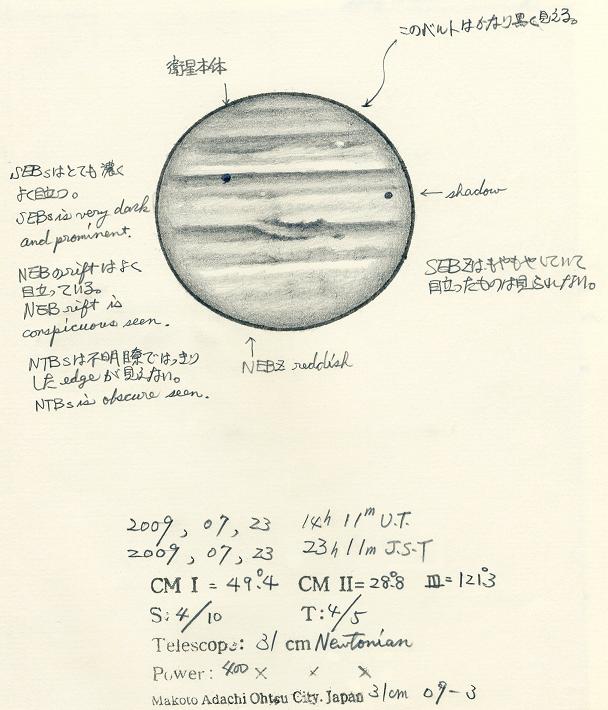
--------------------------------------------------------------

--------------------------------------------------------------
<Makoto Adochi Ohtu Shiga Japan>
≪滋賀県 大津市 安達 誠≫
|
Nilde Sotera (Newton 178 mm f/5.5) |
The best frames appeared blinking among the worst, during every capture. Seeing improved a little throughout the session. In the end, processing was lucky and delivered unexpected results.
Greetings,
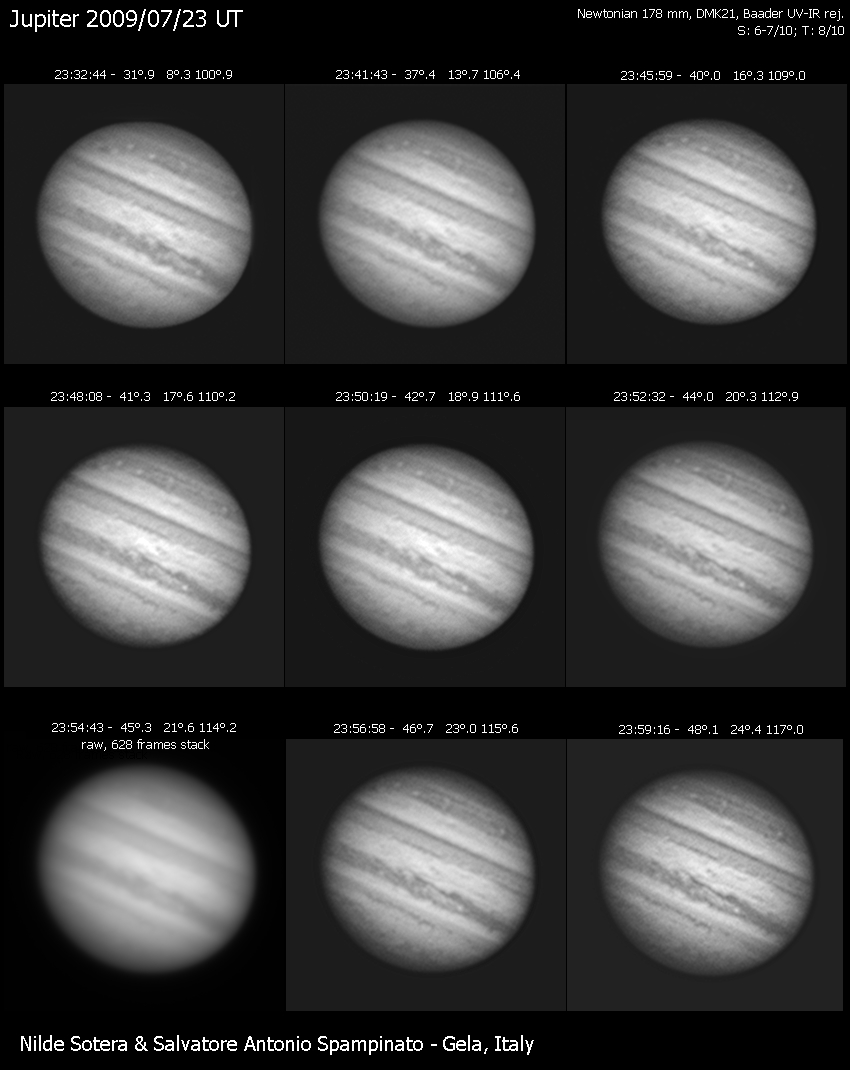 [Nilde Sotera : Gela,Italy]
[Nilde Sotera : Gela,Italy]
|

 [John Kazanas,Melbourne Australia]
[John Kazanas,Melbourne Australia]

 [Sadegh ghomizadeh: Tehran IRAN ]
[Sadegh ghomizadeh: Tehran IRAN ]


 [Hideo Einaga Kasai-City Hyogo-Prefecture Japan]
≪兵庫県 加西 永長英夫≫
[Hideo Einaga Kasai-City Hyogo-Prefecture Japan]
≪兵庫県 加西 永長英夫≫

 [Efrain Morales Rivera Aguadilla:Puerto Rico]
[Efrain Morales Rivera Aguadilla:Puerto Rico] [David Pretorius,Tasmania Australia]
[David Pretorius,Tasmania Australia]
 [Nilde Sotera : Gela,Italy]
[Nilde Sotera : Gela,Italy] ALPO-Japan Latest
ALPO-Japan Latest